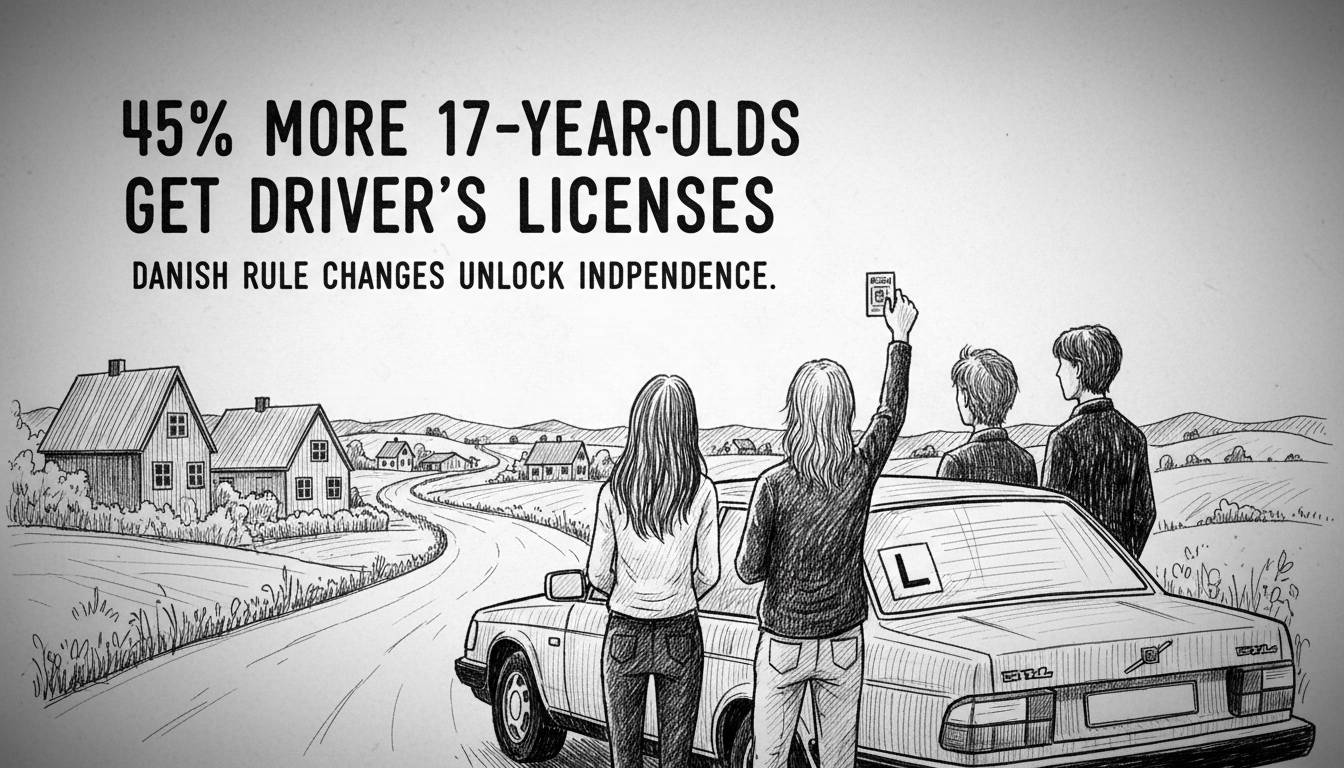New data shows a dramatic surge in Danish teenagers pursuing driver's licenses following relaxed regulations. The number of 17-year-olds starting driving courses jumped by 45% during the summer months compared to the same period last year. The Danish Ministry of Transport confirmed these figures in their latest report.
The spike follows a July rule change that now permits 17-year-old drivers to operate vehicles without supervision between 5:00 AM and 8:00 PM. Outside these hours, they must still be accompanied by an experienced licensed driver who meets specific requirements.
Transport Minister Thomas Danielsen welcomed the development. He said the new rules provide greater mobility and transportation options for young people across Denmark. This is particularly important in rural areas where public transportation is limited and distances between homes can be substantial.
The Danish Road Directorate compiled statistics from June through August. The data reveals 11,272 teenagers began driver's education during these months, up from 7,760 during the same period the previous year.
Denmark first allowed 17-year-olds to obtain licenses in 2017, lowering the previous minimum age of 18. However, these younger drivers previously faced strict supervision requirements. Until this summer's changes, they could only drive with an experienced motorist beside them at all times.
Safety organizations expressed cautious optimism about the new freedom. Just before the rules took effect, the Council for Safe Traffic urged parents to continue riding along with their newly licensed teenagers. The council's managing director Jakob Bøving Arendt emphasized that while young drivers now may drive alone during daytime hours, that doesn't mean they always should.
The council highlighted ongoing concerns about teenage driving behavior. Young drivers typically have more to learn about road safety while simultaneously displaying riskier driving patterns than experienced motorists.
These regulatory changes aim to address transportation challenges in regions with poor public transit options. Many Danish communities outside major urban centers lack frequent bus or train services, making personal vehicles essential for employment, education, and social activities.
Alongside the relaxed supervision rules, Denmark introduced stricter alcohol limits for new drivers. Drivers in their first three years with a license now face a 0.2 promille blood alcohol limit, compared to the standard 0.5 promille for experienced motorists.
This policy shift reflects broader Nordic trends in balancing youth mobility with road safety. Similar graduated licensing systems exist in Sweden and Norway, though specific age requirements and restrictions vary across the region. The immediate surge in license applications suggests the rule changes directly address pent-up demand among Danish teenagers seeking greater independence.
The economic implications are also noteworthy. Driving schools across Denmark likely benefit from increased enrollment, while families may face additional costs for vehicle insurance and fuel. For international readers familiar with different licensing systems, Denmark's approach represents a middle ground between highly restrictive systems and complete driving freedom for teenagers.

